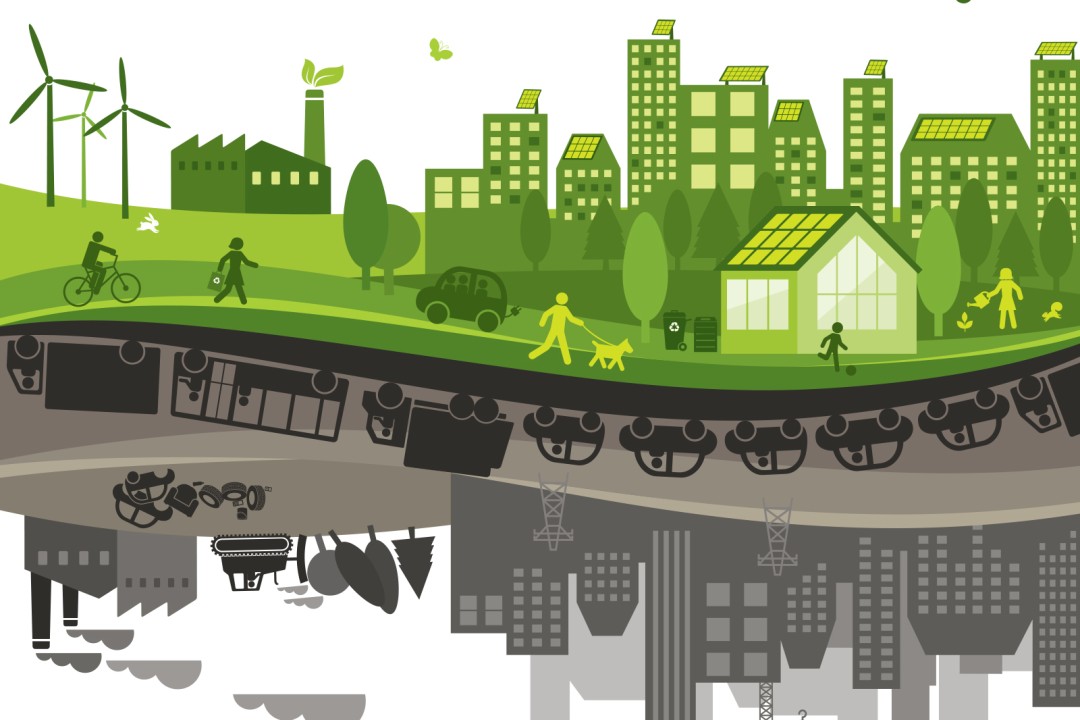As sustainable construction takes on greater importance and urgency, it’s no longer enough to use “green” materials and energy-efficient mechanical systems. The construction industry must expand its understanding of sustainability in order to minimize its impact on our environment, including taking a hard look at the amount of waste being generated. To mount a comprehensive response to the call for more sustainable construction, AEC firms must address the societal impact, health, and safety of constructed assets, as well as the construction processes it takes to create them.
Owners and investors are taking sustainability seriously, and they’re expecting the companies they partner with on projects to do the same. Those AEC firms that are rising to the top are incorporating sustainability as part of their broader environmental, social, and governance (ESG) initiatives. In doing so, they’re demonstrating strong corporate social responsibility and increasing their agility to respond to increasing regulations, environmental challenges, and social issues. Read on to learn how the scope of construction sustainability is evolving, and how several AEC firms are embracing sustainability to create competitive advantage.
Four Trends that Will Impact the Future of Sustainable Construction
Since the introduction of green construction in the 1970s, most efforts have centered on reducing the energy consumption of built assets. Solutions like solar panels, triple-glazed windows, and reflective roofing materials dominated the conversation. For infrastructure projects, the focus has been on reducing congestion and increasing the usage of recycled materials. Little attention was paid to the construction process itself. Until now. Here’s why that’s changing.
Embodied Carbon
Until recently, much of the focus on sustainability in the building sector focused on reducing operational carbon, the greenhouse gas emissions (GHGs) generated by heating, cooling, and powering buildings. But the effects of embodied carbon –– the GHGs derived from manufacturing, transporting, and installing construction materials –– are garnering greater attention. Even in the heavy civil sector, where recycled materials are touted for their reduced energy consumption, stakeholders are only now beginning to measure and define standards for embodied carbon.
Right now, operational carbon accounts for the majority of GHGs generated by buildings. But the share of embodied carbon generated by construction will account for almost half of new construction emissions between now and 2050, according to Architecture 2030, an organization whose mission is to significantly reduce GHGs by 2030. While asset owners already have a wealth of tools available to reduce operational carbon, ranging from innovative HVAC technology to energy-efficient lighting, they need to identify new ways to reduce embodied carbon.
According to the World Green Building Council (WGBC), the volume of building space is expected to double between 2020 and 2060, and investments in infrastructure are forecast to grow by 40-70% between 2020 and 2040. Those projects will produce an immense amount of embodied carbon, and owners should consider renovating existing assets instead of building new ones to reduce those emissions. That being said, some new construction is inevitable, leaving a short window of time to identify the major sources of embodied carbon and mitigate their effects.
Leaders in green construction, such as the State of California and The International Green Construction Code (IGCC), are starting to incorporate embodied carbon assessments in building codes and procurement policies.
• In the United States, ASTM E2921 and the 2018 IGCC provide minimum guidelines for performing life cycle assessments (LCAs), which document and analyze the entire carbon footprint of an asset.
• The Buy Clean California Act requires state agencies to assess the carbon impact of materials used for state-funded building and infrastructure projects. Similar legislation has been passed and/or proposed in several other states.
• The State of Minnesota’s B3 guidelines –– the state’s internally developed energy-efficient building standards –– aims to reduce the embodied environmental impact of building materials by requiring LCAs for new construction.
While these embodied carbon regulations are still in the early stages, they’re a sign of what’s to come. Understanding the full environmental impact of an asset is critical to meeting zero energy initiatives, which call for new buildings to consume only the energy they produce onsite or limited amounts of renewables. Industry associations such as the WGBC and The American Institute of Architects (AIA) point out that any zero energy project that doesn’t take embodied carbon into consideration will fall short of its goal.
Health and Human Safety
Sustainable construction doesn’t just reduce harm to the environment. It can also minimize harm to people. The National Institute for Occupational Safety & Health (NIOSH), along with the US Green Building Council (USGBC), is promoting Prevention through Design (PtD), a practice which is intended to use design to minimize occupational risks. While green building standards and rating systems included some considerations for occupant health, none of them directly mentioned worker safety. Just as we’re starting to see carbon emissions from a more holistic standpoint, we can do the same for health and human safety. It’s time to look beyond the operational portion of an asset’s life and focus on its whole life cycle. In fact, the NIOSH also promotes the idea of life cycle safety, which is similar to the life cycle assessment approach applied to carbon emissions.
To put these recommendations into practice, the NIOSH advises designers to consider design features that would eliminate common safety hazards. For example, they can specify the use of cast-in sockets around floor openings and stairways, which allows for the installation of temporary guardrails during construction. Instead of needing a fall arrest system, the guardrails prevent workers from falling in the first place. Similar design considerations, such as the installation of permanent stairs in places where maintenance workers would typically use ladders, can be made for the operations phase of the project.
Resource Consumption
Engineers and designers have developed methods of using building materials more efficiently. But to offset the sheer volume of construction that is anticipated to occur in the coming decades, more diligent efforts to minimize resource consumption are needed.
The bigger issue is that much of these materials turn into waste. It’s estimated that up to 20% of construction materials go unused. Accepting this status quo is untenable, and the waste is preventable. One study found that, while design changes account for a significant portion of construction waste, procurement and materials handling practices were also major contributors. Researchers identified poor coordination, incomplete and late information, contract mistakes, and ordering errors as some of the underlying causes of these issues. To mitigate these factors, the onus is on all project stakeholders to improve collaboration and data management, and they must do so earlier in the construction process.
Social Responsibility
Investors and owners are prioritizing environmental justice and human health issues, and they’re looking for partners who are like minded. AEC companies’ ESG policies are increasingly evaluated during the selection process and can provide a competitive advantage to those who demonstrate clear and focused commitment.
To address these wide-ranging challenges, the construction sector needs to take a holistic approach to sustainability. No longer a side project or afterthought, sustainability must become a strategic priority to meet the challenges of the climate imperative, prevent overconsumption of raw materials, and make the built environment safer for everyone who builds and occupies it. That means that AEC firms must incorporate sustainability into their culture. But what does that mean, in practical terms?
How AEC Firms Are Using Technology to Construct Sustainably
AEC stakeholders have a number of resources available to meet the sustainability challenges they face. Integrated project delivery methods such as design-build and construction manager at risk (CMAR) can bring project teams together to design and construct projects more efficiently and sustainably. A host of technology tools are also facilitating information sharing and increasing collaboration among stakeholders to minimize errors, reduce waste, and deliver projects more safely and predictably, all of which support efforts to improve sustainability. Here are some real-life examples of AEC firms using technology to make construction more sustainable.
Architecture Firm Reduces Energy Usage by 55%
JLG Architects is a North Dakota-based firm participating in the AIA’s ZNE initiative, known as the 2030 Challenge. The firm’s leadership decided to integrate their commitment to the challenge into their project processes by creating energy models for every 2030 reportable project, as well as completing an AIA framework for Design Excellence (FDE-10) for all projects.
To accomplish their lofty goal, JLG is setting the right conditions for success. For starters, they ensured that each member of their team understands Energy Use Intensity (EUI) and how to optimize the performance of the building envelope. They also implemented Sefaira, a cloud-based energy modeling tool, company-wide. Running alongside SketchUp, Sefaira allows JLG’s designers to understand the energy use, thermal comfort, carbon emissions, daylight, and HVAC performance of every project they design.
So far, the results speak for themselves: the firm already achieved a 55% energy reduction in 2020 compared to the 2030 baseline. The team is also continuously gathering energy modeling data that they can then use as they design. They’re able to analyze every single project and leverage that data to provide more value to clients.










